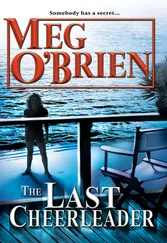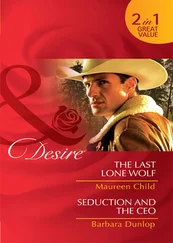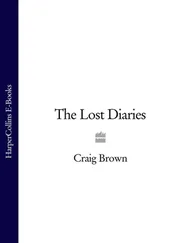Richard Edgcumbe - Byron - The Last Phase
Здесь есть возможность читать онлайн «Richard Edgcumbe - Byron - The Last Phase» — ознакомительный отрывок электронной книги совершенно бесплатно, а после прочтения отрывка купить полную версию. В некоторых случаях можно слушать аудио, скачать через торрент в формате fb2 и присутствует краткое содержание. Жанр: literature_19, Поэзия, foreign_antique, foreign_prose, foreign_poetry, Биографии и Мемуары, на английском языке. Описание произведения, (предисловие) а так же отзывы посетителей доступны на портале библиотеки ЛибКат.
- Название:Byron: The Last Phase
- Автор:
- Жанр:
- Год:неизвестен
- ISBN:нет данных
- Рейтинг книги:3 / 5. Голосов: 1
-
Избранное:Добавить в избранное
- Отзывы:
-
Ваша оценка:
- 60
- 1
- 2
- 3
- 4
- 5
Byron: The Last Phase: краткое содержание, описание и аннотация
Предлагаем к чтению аннотацию, описание, краткое содержание или предисловие (зависит от того, что написал сам автор книги «Byron: The Last Phase»). Если вы не нашли необходимую информацию о книге — напишите в комментариях, мы постараемся отыскать её.
Byron: The Last Phase — читать онлайн ознакомительный отрывок
Ниже представлен текст книги, разбитый по страницам. Система сохранения места последней прочитанной страницы, позволяет с удобством читать онлайн бесплатно книгу «Byron: The Last Phase», без необходимости каждый раз заново искать на чём Вы остановились. Поставьте закладку, и сможете в любой момент перейти на страницу, на которой закончили чтение.
Интервал:
Закладка:
It appears that Mrs. Wildman (the widow of the Colonel who had bought Newstead from Byron) not long before her death presented to the Naturalist Society of Nottingham several objects which had belonged to Lord Byron, and amongst others his boot and shoe trees. These trees are about nine inches long, narrow, and generally of a symmetrical form. They were accompanied by the following statement:
‘William Swift, bootmaker at Southwell, Nottinghamshire, having had the honour of working for Lord Byron when residing at Southwell from 1805 to 1807, asserts that these were the trees upon which his lordship’s boots and shoes were made, and that the last pair delivered was on the 10th May, 1807. He moreover affirms that his lordship had not a club foot, as has been said, but that both his feet were equally well formed, one, however, being an inch and a half shorter than the other. 1 1 Medwin, in his book ‘The Angler in Wales,’ vol. ii., p. 211, says: ‘The right foot, as everyone knows, being twisted inwards, so as to amount to what is generally known as a club-foot.’
The defect was not in the foot, but in the ankle, which, being weak, caused the foot to turn out too much. To remedy this, his lordship wore a very light and thin boot, which was tightly laced just under the sole, and, when a boy, he was made to wear a piece of iron with a joint at the ankle, which passed behind the leg and was tied behind the shoe. The calf of this leg was weaker than the other, and it was the left leg.
‘(Signed) William Swift.’
‘This, then,’ says Countess Guiccioli, ‘is the extent of the defect of which so much has been said, and which has been called a deformity. As to its being visible, all those who knew him assert that it was so little evident, that it was even impossible to discover in which of the legs or feet the fault existed.’
Byron’s alleged sensitiveness on the subject of his lameness seems to have been exaggerated.
‘When he did show it,’ continues Countess Guiccioli, ‘which was never but to a very modest extent, it was only because, physically speaking, he suffered from it. Under the sole of the weak foot he at times experienced a painful sensation, especially after long walks. Once, at Genoa, Byron walked down the hill from Albaro to the seashore with me by a rugged and rough path. When we had reached the shore he was very well and lively. But it was an exceedingly hot day, and the return home fatigued him greatly. When home, I told him that I thought he looked ill. “Yes,” said he, “I suffer greatly from my foot; it can hardly be conceived how much I suffer at times from that pain;” and he continued to speak to me about this defect with great simplicity and indifference.’
We have been particular to set before the reader the impression which Byron’s personal appearance made upon those who saw him at this time, because none of the busts or portraits seem to convey anything like an accurate semblance of this extraordinary personality. Had the reader seen Byron in his various moods, he would doubtless have exclaimed, with Sir Walter Scott, that ‘no picture is like him.’
The portrait by Saunders represents Byron with thick lips, whereas ‘his lips were harmoniously perfect,’ says Countess Guiccioli. Holmes almost gives him a large instead of his well-proportioned head. In Phillips’s picture the expression is one of haughtiness and affected dignity, which Countess Guiccioli assures us was never visible to those who saw him in life. The worst portrait of Lord Byron, according to Countess Guiccioli, and which surpasses all others in ugliness, was done by Mr. West, an American, ‘an excellent man, but a very bad painter.’ This portrait, which some of Byron’s American admirers requested to have taken, and which Byron consented to sit for, was begun at Montenero, near Leghorn. Byron seems only to have sat two or three times for it, and it was finished from memory. Countess Guiccioli describes it as ‘a frightful caricature, which his family or friends ought to destroy.’ As regards busts, she says:
‘Thorwaldsen alone has, in his marble bust of Byron, been able to blend the regular beauty of his features with the sublime expression of his countenance.’
On January 22, 1822, Byron’s mother-in-law, Lady Noel, died at the age of seventy.
‘I am distressed for poor Lady Byron,’ said the poet to Medwin: ‘she must be in great affliction, for she adored her mother! The world will think that I am pleased at this event, but they are much mistaken. I never wished for an accession of fortune; I have enough without the Wentworth property. I have written a letter of condolence to Lady Byron – you may suppose in the kindest terms. If we are not reconciled, it is not my fault.’
There is no trace of this letter, and it is ignored by Lord Lovelace in ‘Astarte.’ It may be well here to point out how erroneous was the belief that Miss Milbanke was an heiress. Byron on his marriage settled £60,000 on his wife, and Miss Milbanke was to have brought £20,000 into settlement; but the money was not paid. Sir Ralph Milbanke’s property was at that time heavily encumbered. Miss Milbanke had some expectations through her mother and her uncle, Lord Wentworth; but those prospects were not mentioned in the settlements. Both Lord Wentworth and Sir Ralph Milbanke were free to leave their money as they chose. When Lord Wentworth died, in April 1815, he left his property to Lady Milbanke for her life, and at her death to her daughter, Lady Byron. Therefore, at Lady Noel’s death Byron inherited the whole property by right of his wife. But one of the terms of the separation provided that this property should be divided by arbitrators. Lord Dacre was arbitrator for Lady Byron, and Sir F. Burdett for Byron. Under this arrangement half the income was allotted to the wife and half to the husband. In the London Gazette dated ‘Whitehall, March 2, 1822,’ royal licence is given to Lord Byron and his wife that they may ‘take and use the surname of Noel only, and also bear the arms of Noel only; and that the said George Gordon, Baron Byron, may subscribe the said surname of Noel before all titles of honour.’ Henceforward the poet signed all his letters either with the initials N. B. or with ‘Noel Byron’ in full.
Byron was at this time in excellent health and spirits, and the society of the Shelleys made life unusually pleasant to him. Ravenna, with its gloomy forebodings, its limited social intercourse, to say nothing of its proscriptions – for nearly all Byron’s friends had been exiled – was a thing of the past. The last phase had dawned, and Byron was about to show another side of his character. Medwin tells us that Byron’s disposition was eminently sociable, however great the pains which he took to hide it from the world. On Wednesdays there was always a dinner at the Palazzo Lanfranchi, to which the convives were cordially welcomed. When alone Byron’s table was frugal, not to say abstemious. But on these occasions every sort of wine, every luxury of the season, and every English delicacy, were displayed. Medwin says he never knew any man do the honours of his house with greater kindness and hospitality. On one occasion, after dinner, the conversation turned on the lyrical poetry of the day, and a question arose as to which was the most perfect ode that had been produced. Shelley contended for Coleridge’s on Switzerland beginning, ‘Ye clouds,’ etc.; others named some of Moore’s ‘Irish Melodies’ and Campbell’s ‘Hohenlinden’; and, had Lord Byron not been present, his own Invocation to Manfred, or Ode to Napoleon, or on Prometheus, might have been cited. ‘Like Gray,’ said Byron, ‘Campbell smells too much of the oil: he is never satisfied with what he does; his finest things have been spoiled by over-polish – the sharpness of the outline is worn off. Like paintings, poems may be too highly finished. The great art is effect, no matter how produced.’
Читать дальшеИнтервал:
Закладка:
Похожие книги на «Byron: The Last Phase»
Представляем Вашему вниманию похожие книги на «Byron: The Last Phase» списком для выбора. Мы отобрали схожую по названию и смыслу литературу в надежде предоставить читателям больше вариантов отыскать новые, интересные, ещё непрочитанные произведения.
Обсуждение, отзывы о книге «Byron: The Last Phase» и просто собственные мнения читателей. Оставьте ваши комментарии, напишите, что Вы думаете о произведении, его смысле или главных героях. Укажите что конкретно понравилось, а что нет, и почему Вы так считаете.












